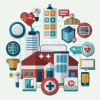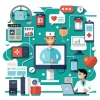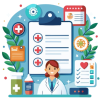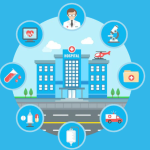
Emergency Room Feedback Template: Improving Patient Care
In today’s fast-paced healthcare environment, providing excellent patient care is crucial, particularly in emergency rooms (ERs) where time-sensitive treatment and patient satisfaction are essential. To achieve this, hospitals are increasingly relying on feedback from patients.
One effective way to collect this feedback is by using an Emergency Room Feedback Template. In this article, we will explore the importance of an emergency room feedback template, and how it can improve patient care.
What Is An Emergency Room Feedback?
Emergency Room Feedback is a structured tool used to gather feedback from patients regarding their ER visits. This information is critical in assessing the quality of care and identifying areas for improvement.
The template usually includes questions that focus on the patient’s overall experience, including wait times, interactions with staff, and facility conditions. Hospitals use this feedback to implement changes that improve patient care and satisfaction.
Benefits Of Using An Emergency Room Feedback
Collecting patient feedback through a structured template brings numerous benefits to hospitals. This section explains the key advantages of using emergency room feedback:
- Improved Patient Satisfaction: Patients feel heard and valued, which enhances their overall experience. By addressing concerns based on feedback, hospitals can create a more welcoming environment for patients.
- Streamlined Service Delivery: Feedback helps identify bottlenecks, reducing wait times and improving care delivery. This leads to faster, more efficient treatment processes, ensuring patients receive care when they need it most.
- Enhanced Communication: Insights from feedback help medical teams improve their communication with patients. Clearer, more compassionate communication leads to better patient understanding and greater trust in healthcare providers.
- Data-Driven Decisions: Structured feedback provides actionable data that can guide policy changes. Hospitals can use this information to make targeted improvements based on real patient experiences rather than assumptions.
- Compliance with Healthcare Standards: Feedback helps hospitals meet regulatory requirements by maintaining high standards of patient care. It ensures that facilities stay compliant with legal obligations while continuously improving their services.
Top Emergency Room Feedback Template Examples
Example.1

Example.2

Example.3

Importance Of Collecting Patient Feedback In The Er
Patient feedback is an essential component of quality improvement in emergency rooms. By understanding patients’ experiences, hospitals can make strategic adjustments:
- Enhances Patient Trust: Gathering feedback shows patients that their opinions matter. When hospitals act on feedback, patients are more likely to trust the care they receive.
- Identifies Weaknesses: Feedback can reveal areas that require improvement, such as long wait times or insufficient communication. This enables hospitals to address these issues directly and improve patient care.
- Supports Continuous Improvement: Regular feedback collection helps hospitals continuously enhance their services. With consistent input, healthcare providers can fine-tune their processes to better meet patient needs.
- Improves Staff Performance: Feedback highlights areas where staff performance can be improved. This helps in training and development, ensuring that staff are always performing at their best.
- Encourages Transparency: It promotes openness and accountability in healthcare service delivery. Patients feel reassured knowing that their concerns are taken seriously and acted upon.
- Promotes Patient-Centered Care: Focuses on improving the patient experience based on their specific needs and concerns. By prioritizing patient-centered feedback, hospitals can tailor their services to better align with patient expectations.
Key Elements Of An Effective Emergency Room Feedback Template
When designing an effective feedback template, it is essential to focus on gathering relevant and actionable information. Below are the key elements that should be included:
1. Patient Information
Collect basic information such as the patient’s name, age, and the date of their visit. This will help in tracking the patient’s feedback and correlating it with their medical records.
2. Wait Times
Ask patients to rate the time they spent waiting to be seen by medical professionals. Provide options for them to describe the waiting process and any frustrations they may have encountered.
3. Quality Of Care
This section should include questions about the patient’s experience with medical staff, such as doctors, nurses, and support staff. Ask whether they felt they received appropriate attention, care, and treatment.
4. Communication
Focus on the level of communication between the medical team and the patient. Did the patient understand their diagnosis, treatment options, and instructions? This section can highlight any communication gaps.
5. Facility Cleanliness And Comfort
Ask patients for their impressions of the cleanliness and comfort of the ER. A clean and comfortable environment can have a significant impact on patient satisfaction.
6. Overall Experience
Allow patients to rate their overall experience in the emergency room. This section can provide an overall perspective of their visit and offer insights into areas that may not have been covered in previous sections.
7. Suggestions For Improvement
Include an open-ended question where patients can suggest ways to improve the emergency room services. This allows patients to provide unique insights that might not fit into predefined categories.
Conclusion
An Emergency Room Feedback Template is an essential tool for hospitals aiming to improve their patient care. By collecting, analyzing, and acting on feedback, hospitals can enhance their emergency services, reduce patient dissatisfaction, and create a more positive healthcare environment
Frequently Asked Questions
Why Is Patient Feedback Important In An Emergency Room Setting?
Patient feedback is crucial in the ER as it provides insights into the quality of care and highlights areas for improvement. This feedback helps hospitals enhance patient satisfaction and outcomes.
How Can Hospitals Encourage Patients To Fill Out Feedback Templates?
Hospitals can encourage feedback by making the process easy and accessible. Staff should inform patients about the importance of their feedback and provide them with both paper and digital options for submission.
What Kind Of Questions Should Be Included In An Emergency Room Feedback Template?
An effective template should include questions about wait times, the quality of care, staff communication, facility cleanliness, and the overall experience. Open-ended questions for suggestions can also be valuable.
How Is The Feedback From The Emergency Room Used To Improve Services?
Hospitals analyze the data collected from feedback to identify patterns and areas for improvement. This may include reducing wait times, improving staff communication, or making facility upgrades.
Enhance Patient Care and NABH Compliance with LazyMonkey
LazyMonkey is your all-in-one solution for improving patient care, retaining more patients, and meeting NABH standards. Our powerful QR-based feedback tool enables you to capture real-time insights from patient feedback, discharge surveys, staff and doctor evaluations, and clinical research, while also streamlining inter-departmental communication.
Transform your healthcare facility today - reach out to us at hello@lazymonkey.in, or request a demo here!
Elevate Your Restaurant Experience with LazyMonkey
LazyMonkey’s QR-based feedback system helps you gather real-time insights from customers, track satisfaction levels, and enhance the dining experience. Get instant feedback on your menu, service, and ambience, and make data-driven improvements to boost repeat customers and reviews.
Improve your restaurant today – reach out to us at hello@lazymonkey.in, or request a demo here!
Empower Student Engagement and Campus Improvement with LazyMonkey
LazyMonkey offers a seamless way to gather student feedback, track satisfaction, and enhance campus life. From course evaluations to dorm feedback, our QR-based solution makes it easy to capture valuable insights and improve student retention.
Upgrade your university experience – contact us at hello@lazymonkey.in, or request a demo here!
Streamline Feedback and Drive Performance Across Your Enterprise/Franchise with LazyMonkey
Whether you manage one or multiple locations, LazyMonkey’s QR-based feedback system helps you gather real-time employee and customer feedback. Improve operational efficiency, track satisfaction, and make data-driven decisions to enhance brand consistency and growth.
Transform your franchise today – reach out to us at hello@lazymonkey.in, or request a demo here!
Enhance Customer Satisfaction and Service Standards in Banking with LazyMonkey
LazyMonkey empowers banks to capture real-time feedback from clients across branches. Improve customer experience, assess service quality, and ensure regulatory compliance with our QR-based solution, helping you retain clients and meet banking standards.
Elevate your bank’s customer care – contact us at hello@lazymonkey.in, or request a demo here!
Boost Customer Engagement and Mall Satisfaction with LazyMonkey
LazyMonkey’s QR-based feedback tool enables you to collect feedback from shoppers, track satisfaction, and enhance the mall experience. Gather insights on store services, cleanliness, and entertainment to create an unmatched customer journey.














